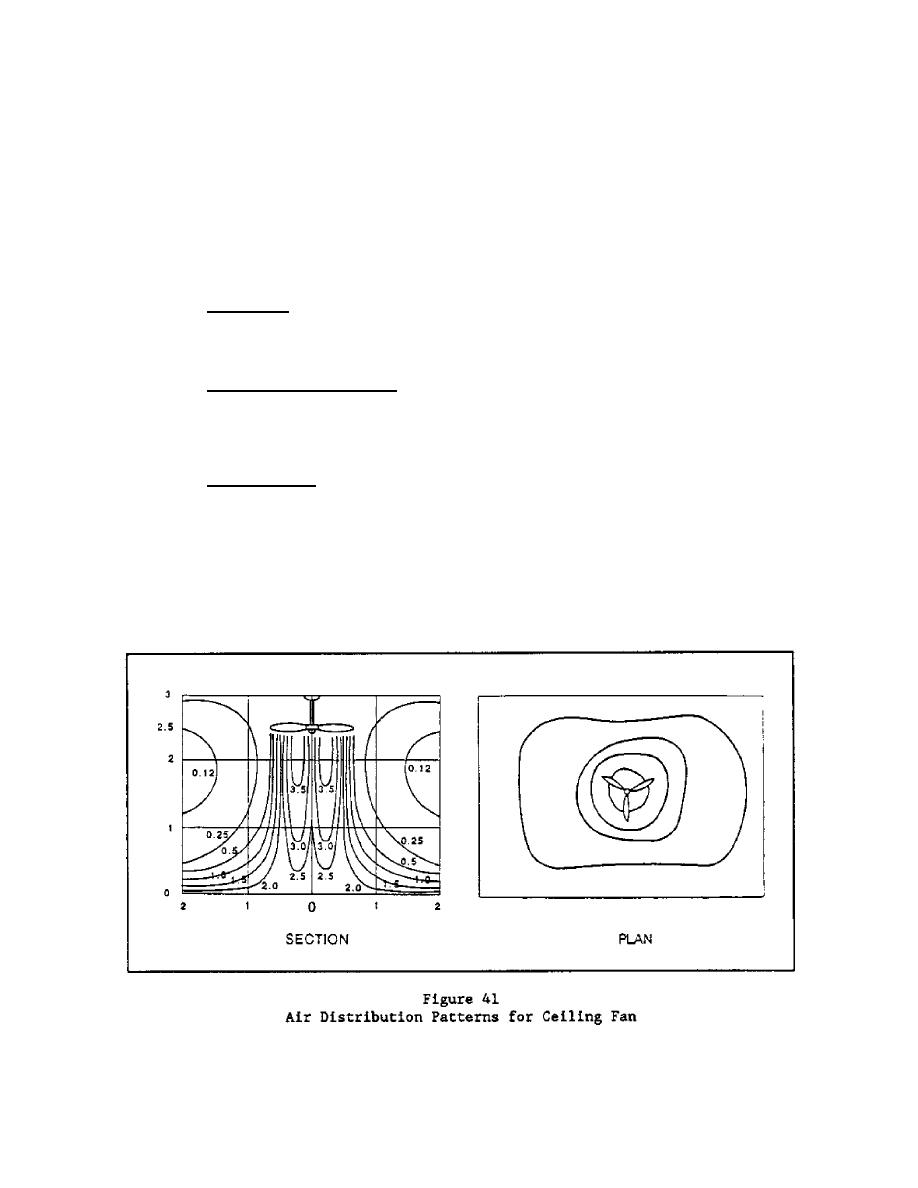
MIL-HDBK-1011/2
A building with exterior solar control devices may still require
drapes or blinds for privacy or to control light levels or glare. Since they
block ventilative airflow, their use should be carefully considered. Drapes
tend to block more air movement than blinds, but under high ventilation rates
blinds may fall apart or cause excessive noise. When possible, they should be
solidly connected to the floor and the ceiling to prevent blowing or rattling,
and should allow air movement even when fully closed. Consider the use of
systems that can be controlled at different heights to allow some portions to
remain open while other portions are closed.
4.5.7.4
Furniture. Large pieces of furniture can have a major effect on
room airflow patterns. Items such as desks and beds can prevent air movement
below 30 inches (76 cm) or divert airflow away from occupants. These effects
should be considered when selecting furniture and laying out furniture plans.
4.6
Auxiliary Fan Systems. Fans are frequently used to supplements
natural ventilation. Fans reduce cooling requirements by exhausting heat from
the building's interior, and by increasing air movement in the living space to
assist bodily cooling. Refer to para. 2.2 for a description of body and
structural cooling.
4.6.1
Ceiling Fans. This type of fan is effective for bodily cooling on
a room-by-room basis. Ceiling fans can provide inexpensive air mixing when
wind driven ventilation is inadequate. Figure 40 shows the typical
distribution of air velocity under a ceiling fan. When choosing ceiling fans
consider control over speed variability, minimum and maximum speeds, noise
level, power requirements and minimum floor to ceiling heights.
For naturally ventilated buildings in which high air movement
(above 98 fpm or 0.5 m/sec) is required for comfort, ceiling fans are required
52


 Previous Page
Previous Page
